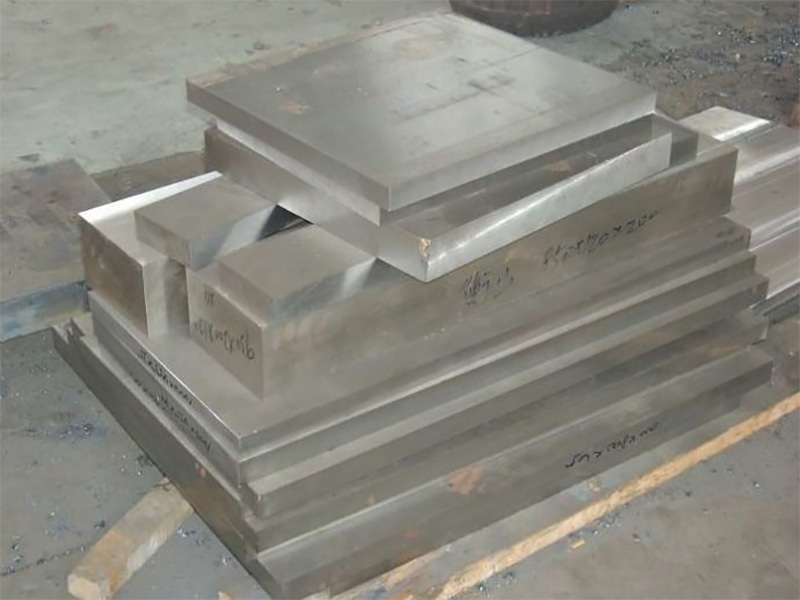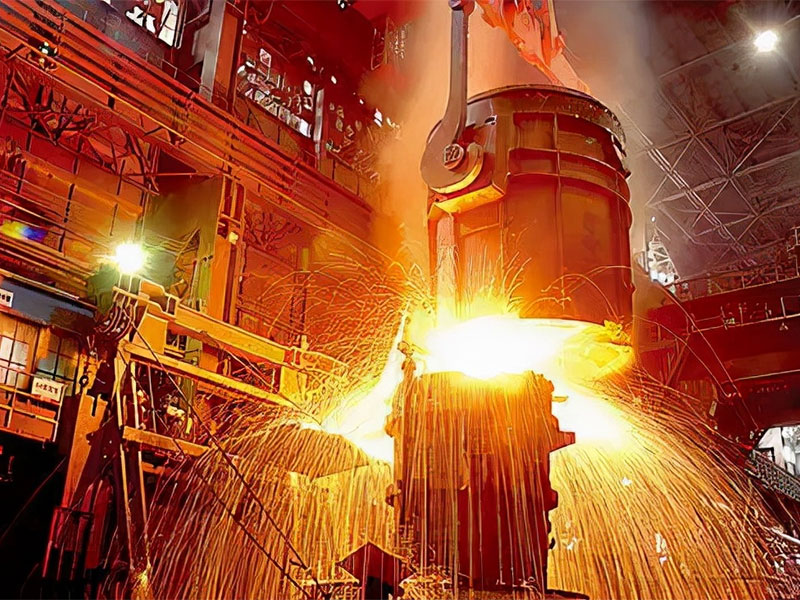

Low alloy deformation mold steel are mainly Cr-Ni or Cr-Mn to add the alloying element Mo or Ti. at present, the domestic still widely used Cr-Ni or Cr-Mn system of low-alloy deformation mold steel, the typical steel for 5CrNiMo and 54NiMo its chemical composition and heat treatment similar to tempered steel, the general plant in the quenching to prevent mold deformation and cracking, the temperature out of the oil dare not press of very low, generally at about 200 ℃. At this time only slightly lower than the steel Ms point, so only the mold surface to obtain a layer of martensite organization, the heart is still in the state of subcooled austenite, in order to prevent mold cracking in general, and timely transfer to 380 ~ 540 ℃ tempering furnace in time to temper, so that the heart of the subcooled austenite may be transformed into the tempering process on the bainite organization, impact toughness is poor. As a result, causing the domestic forging die life is generally not high, not more than 3000 pieces, its failure mode is cracking, plastic deformation and cracking.heat deformation mold steel
In order to improve the service life of this type of steel hot deformation mold steel, so the use of compound isothermal heat treatment is a proven method. The method first in 160 ~ 200 ℃ nitrate salt in the graded stay to make it occur part of the martensite transformation, and then transferred to 280 ~ 300 ℃ nitrate salt isothermal 2 ~ 3 hours, after such treatment of the organization, by the martensite, under the bainite, residual austenite composition, and then remove the air cooling, and then according to the required hardness in the specified temperature tempering. After this treatment, the core is mainly tempered with lower bainite, and the toughness of the steel is significantly improved compared to upper bainite with the same hardness. In addition, the quenching heating temperature increased to 880 ~ 900 ℃, so that the quenching martensite morphology has changed, the proportion of martensite slat structure increased, quenching hardness increased, after such treatment forging die life can be significantly improved.

China’s relevant units developed in line with our resources to Si-Mn-based nickel-free chromium low-alloy deformation mold steel 5SiMnMoV and 5CrMnSiMoV respectively instead of 5CrNiMo and 5CrMnMo such steel has good high-temperature fatigue strength and good hardenability, which is represented by 5CrMnSiMoV large and medium-sized forging die steel, with good hardenability, higher High strength, hardness, wear resistance and good impact toughness. Its tempering stability and fatigue resistance are better than 5CrNiMo steel, but plasticity and impact toughness is lower than 5CrNiMo steel, but can basically meet the requirements, so it can be used in medium and large forging dies.
3Cr2W8V as China’s most typical and most widely used high-alloy heat deformation mold steel, is a representative steel of the Cr-W type series, is widely used as a hot extrusion die and Cu.A1 alloy deformation mold steel, this steel thermal stability, good thermal strength, the use of temperature up to 650 ℃, but low thermal conductivity, poor thermal fatigue resistance, has been gradually replaced by the Cr-Mo series of hot work deformation mold steel. Therefore, in the die-casting die, forging die in recent years widely used H11 (4Cr5MoVSi) or H13 (4Cr5MoV1Si). But 3Cr2W8V is still widely used in our country high alloy hot steel die, more attention is paid to the majority of heat treatment workers in China around its high temperature strength, impact toughness and fracture toughness for a variety of heat treatment process improvements.
3Cr2W8V although the carbon content is about 0.3%, but belongs to the over eutectic steel, the basic organization for the soxhlet plus carbide, in order to make the alloy carbide to achieve fine, even, element, so that after heat treatment steel has a high strong edge, conventional annealing process is not achieved.
(1) high-temperature solid-volume quenching fast and uniform spheroidization method. Steel by 1200 ℃ austenite quenching oil, cooling to 400 ~ 500 ℃ removed and then 730 ~ 750 ℃ short time isothermal air cooling.
(2) High temperature quenching – high temperature isothermal rapid uniform spheroidization method. Steel by 1020 ~ 1100 ℃ isothermal oil cooling, and then reheated to 840 ~ 900 ℃ isothermal without insulation followed by furnace cooling, hardness Hb210 or so, carbide 0.4 ~ 0.9 um, carbide particles are fine.


For Further Details,Please Feel Free To Contact Us: